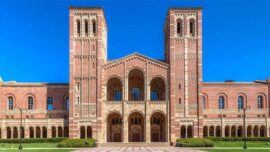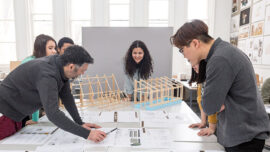
Architecturally Meaning: Understanding the Significance of Architecture in Various Contexts
Table of Contents
- Introduction
- Defining Architecture and its Purpose (H1)
- The Concept of Architecture
- The Evolution of Architectural Practices
- Architecture in the Historical Context (H1)
- Ancient Architectural Marvels
- Renaissance and the Birth of Modern Architecture
- Architectural Styles and Movements (H2)
- Gothic Architecture
- Art Deco Style
- Postmodern Architecture
- The Role of Architecture in Society (H2)
- Shaping Urban Spaces
- Influencing Human Behavior
- Sustainable Architecture (H2)
- Green Buildings and Energy Efficiency
- Biophilic Design
- The Interplay of Architecture and Technology (H3)
- Smart Cities
- Virtual Reality in Architecture
- Iconic Architectural Landmarks (H3)
- The Eiffel Tower
- The Taj Mahal
- The Guggenheim Museum Bilbao
- Architecture in Different Cultures (H3)
- Asian Architecture
- Middle Eastern Architecture
- Futuristic Visions of Architecture (H4)
- Floating Cities
- Self-Sustaining Habitats
- The Relationship Between Architecture and Art (H4)
- Architecture as Functional Art
- Architectural Photography
- The Challenges and Responsibilities of Architects (H4)
- Balancing Aesthetics and Functionality
- Ethical Considerations in Architecture
- Architecture and Human Well-Being (H4)
- Healing Architecture
- Therapeutic Spaces
- The Impact of COVID-19 on Architecture (H4)
- Redefining Shared Spaces
- The Rise of Home Offices
- Conclusion
Architecturally Meaning: Understanding the Significance of Architecture in Various Contexts
1. Introduction
Architecture is an integral part of human civilization, shaping the way we live, interact, and experience the world around us. From ancient wonders to modern skyscrapers, architectural marvels have always been a reflection of human creativity and ingenuity. In this article, we delve into the diverse dimensions of architecture and explore its historical, cultural, and futuristic significance.
2. Defining Architecture and its Purpose
The Concept of Architecture
Architecture is more than just buildings; it is an art form that combines aesthetics, functionality, and engineering principles. It involves the design, planning, and construction of spaces that serve a purpose, be it residential, commercial, or public.
The Evolution of Architectural Practices
Throughout history, architecture has evolved significantly. From primitive shelters to sophisticated urban landscapes, each era has contributed to the development of architectural techniques and styles.
3. Architecture in the Historical Context
Ancient Architectural Marvels
Ancient civilizations such as the Egyptians, Greeks, and Romans left behind awe-inspiring architectural wonders like the pyramids, Parthenon, and Colosseum. These structures stand as testaments to human achievements in engineering and design.
Renaissance and the Birth of Modern Architecture
The Renaissance period witnessed a revival of classical architectural principles, emphasizing symmetry and proportion. This era laid the foundation for modern architectural practices that emerged in the following centuries.
4. Architectural Styles and Movements
Gothic Architecture
The Gothic style, characterized by pointed arches and elaborate ornamentation, dominated Europe during the Middle Ages. Cathedrals like Notre-Dame de Paris showcase the grandeur and technical prowess of this era.
Art Deco Style
The Art Deco movement of the 20th century embraced geometric shapes, bold colors, and luxurious materials. This style is still prominent in various urban centers, symbolizing the elegance of the Jazz Age.
Postmodern Architecture
Postmodernism challenged the rigidity of modern architecture by incorporating eclectic elements and cultural references. Iconic buildings like the Walt Disney Concert Hall exemplify this playful and innovative style.
5. The Role of Architecture in Society
Shaping Urban Spaces
Architecture plays a vital role in urban development, shaping cityscapes and influencing the way people interact with their surroundings. Well-designed public spaces foster a sense of community and promote social interactions.
Influencing Human Behavior
The design of buildings can impact human behavior, emotions, and well-being. Thoughtfully planned environments can reduce stress, enhance productivity, and improve overall quality of life.
6. Sustainable Architecture
Green Buildings and Energy Efficiency
In the face of environmental challenges, sustainable architecture focuses on energy-efficient design and the use of eco-friendly materials. Green buildings aim to minimize their carbon footprint and conserve resources.
Biophilic Design
Biophilic design integrates nature into built environments, recognizing the innate human need to connect with nature. Incorporating elements like natural light, greenery, and water features enhances occupants’ health and happiness.
7. The Interplay of Architecture and Technology
Smart Cities
Advancements in technology have given rise to smart cities, where architecture and digital infrastructure converge. Smart cities utilize data and connectivity to optimize resource management and enhance the urban experience.
Virtual Reality in Architecture
Virtual reality is revolutionizing the architectural design process, allowing architects and clients to visualize and experience spaces before construction. This technology streamlines decision-making and fosters creativity.
8. Iconic Architectural Landmarks
The Eiffel Tower
A symbol of Paris and an engineering marvel, the Eiffel Tower attracts millions of visitors annually. Its lattice structure stands tall as a testament to human innovation.
The Taj Mahal
The epitome of Mughal architecture, the Taj Mahal is a UNESCO World Heritage Site and an enduring symbol of love and beauty.
The Guggenheim Museum Bilbao
Frank Gehry’s architectural masterpiece, the Guggenheim Museum Bilbao, is a stunning example of deconstructivist architecture that has become an iconic cultural landmark.
9. Architecture in Different Cultures
Asian Architecture
Asian architecture boasts a rich diversity of styles, from the intricate temples of Southeast Asia to the minimalist elegance of Japanese design.
Middle Eastern Architecture
Middle Eastern architecture showcases intricate geometric patterns and grand structures, exemplified by the awe-inspiring domes and minarets of mosques.
10. Futuristic Visions of Architecture
Floating Cities
As concerns about rising sea levels mount, architects are envisioning floating cities that adapt to changing environmental conditions while providing sustainable living spaces.
Self-Sustaining Habitats
Architects are exploring the concept of self-sustaining habitats on other planets, imagining a future where humans can thrive beyond Earth.
11. The Relationship Between Architecture and Art
Architecture as Functional Art
Buildings can be regarded as functional works of art, blurring the line between architecture and artistic expression.
Architectural Photography
Photographers capture the essence of architectural marvels, highlighting their beauty and significance through captivating imagery.
12. The Challenges and Responsibilities of Architects
Balancing Aesthetics and Functionality
Architects face the challenge of balancing aesthetics and functionality, creating spaces that are both visually pleasing and practical.
Ethical Considerations in Architecture
As architecture impacts communities and the environment, architects must consider ethical implications in their designs and decisions.
13. Architecture and Human Well-Being
Healing Architecture
Hospitals and healthcare facilities incorporate healing architecture to promote patient well-being and aid in the recovery process.
Therapeutic Spaces
Architects design therapeutic spaces like meditation gardens and wellness centers to support mental and emotional well-being.
14. The Impact of COVID-19 on Architecture
Redefining Shared Spaces
The pandemic has prompted architects to reimagine shared spaces to ensure safety and adaptability.
The Rise of Home Offices
Remote work has led to an increased demand for home offices, prompting innovative design solutions for work-from-home environments.
15. Conclusion
Architecture is an ever-evolving art that shapes our lives and communities. From ancient wonders to futuristic visions, it reflects our values, aspirations, and adaptability. As technology advances and societies evolve, architecture will continue to be a driving force in shaping the world we inhabit.





0 comments
Write a comment